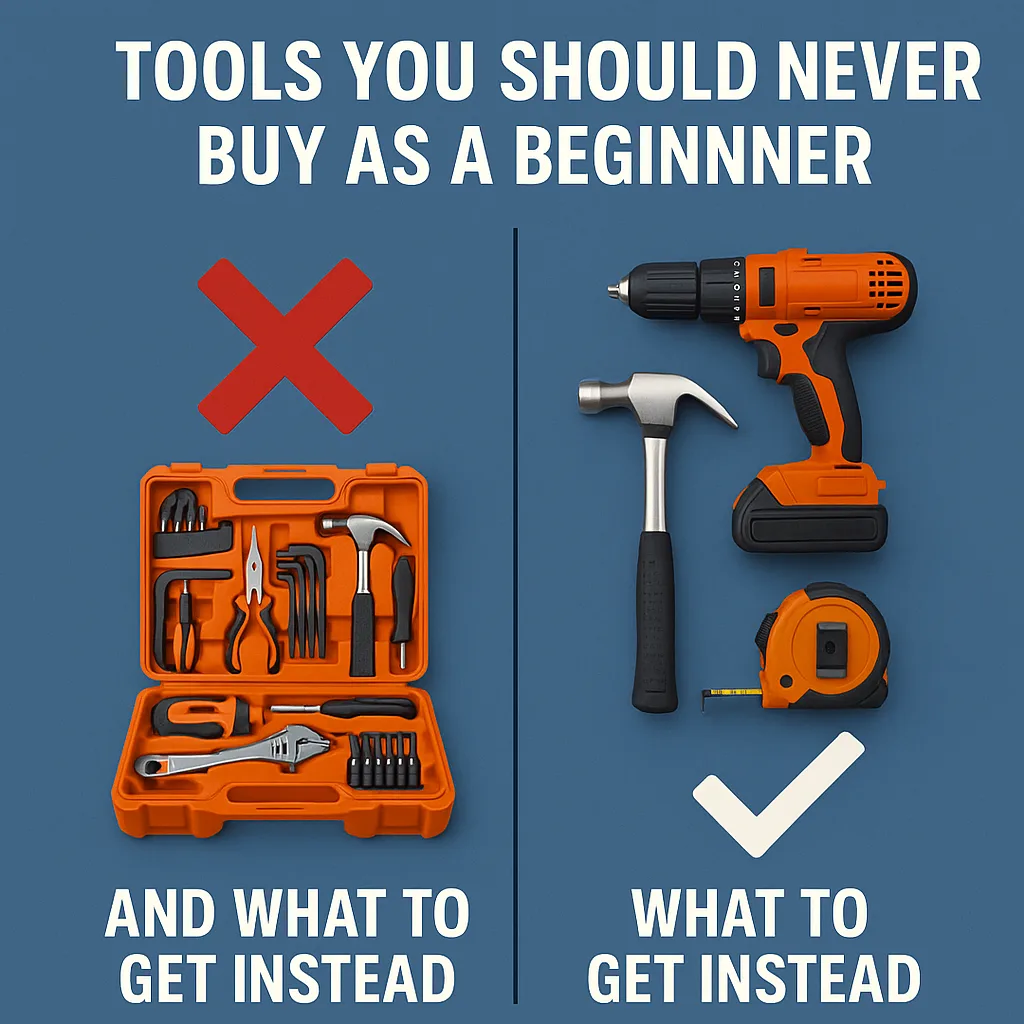New! DIY Project Planner. Plan smarter, skip the spreadsheets. Start Your Free Trial Today →

Walk through any hardware store and you’ll find shelves full of tools that seem like a good idea — until you actually try to use them. The truth is, most beginner DIYers waste money on gear they don’t need, don’t know how to use properly, or regret within a week.
This guide cuts straight to it: which tools to skip as a beginner, why they’re a mistake, and what to buy instead if you actually want to get things done right.
Affiliate note: Some of the links in this post are affiliate links. If you buy through them, we may earn a small commission at no extra cost to you. Thanks for supporting Gold Team Home.
Why it’s a problem:
These kits look like a deal, but most include flimsy versions of tools you’ll never use — and they fall apart after a few uses.
→ Better Option:
Build your own starter kit with quality, multi-use essentials.
Our Recommended Tools for New Homeowners →
Why it’s a problem:
Corded tools are cheap, but they limit mobility, get tangled, and often sit unused once you switch to cordless.
→ Better Option:
Start on a cordless platform like Ryobi ONE+ or DEWALT 20V MAX — and stick to it.
Best Cordless Tools for DIY Projects →
Why it’s a problem:
They’re great tools, but not essential early on. For beginners, they often sit untouched because of the learning curve.
→ Better Option:
A utility knife and multi-bit screwdriver will cover most early projects. Save the oscillating tool for when you’re doing flooring, trim, or repairs.
Why it’s a problem:
Laser levels are overkill for things like hanging shelves or artwork. They take time to set up and don’t add much value to small jobs.
→ Better Option:
Get a good 9-inch torpedo level or 24-inch bubble level — faster, simpler, and plenty accurate.
Simple Levels That Actually Work →
Why it’s a problem:
Combo sets that include a drill, saw, flashlight, and accessories for $99? Most of those tools are underpowered or poorly built.
→ Better Option:
Invest in a quality two-tool combo kit with long-term battery compatibility.
Best Tool Combo Kits Worth Buying →
Why it’s a problem:
Unless you’re working on vehicles or doing plumbing, you won’t use 90% of the pieces — and the price adds up fast.
→ Better Option:
Start with a solid adjustable wrench and a multi-bit driver set. Expand only as needed.
Why it’s a problem:
These are great tools — but they’re expensive, heavy, and rarely necessary for beginner-level projects.
→ Better Option:
Use a circular saw and speed square for most straight cuts. Upgrade only when the projects demand it.
Smart Tool Upgrades That Actually Get Used →
Beginner DIYers don’t need more tools — they need better ones.
Skip the bundles, skip the showpieces, and skip the gear you won’t touch twice. Buy what solves your current problems, and upgrade when your skills (and projects) demand it.
Need help choosing? Check out our Tools We Recommend page or reach out — we’ve wasted money on the wrong tools so you don’t have to.
If you’re deciding between brands, this comparison guide cuts through the hype.
Thinking about upgrading your setup? Here are the tools DIYers actually say were worth every penny.